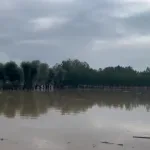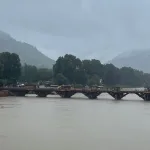As the harsh winter descends upon the Kashmir Valley, the stark reality of its power infrastructure becomes evident. A chillingly consistent narrative repeats itself year after year – incessant power cuts, poorly maintained power infrastructure, and a lack of sustainable energy solutions. The winter season in Kashmir is not just a season; it’s a significant part of the year. The lack of dependable power supply during this period not only inconveniences people but also hampers the overall economic development of the valley. It affects businesses, disrupts education, and makes it tougher for healthcare facilities to function optimally. Simply put, it affects every aspect of life in the valley. Reforming the power supply system in Kashmir is not just about improving the quality of life; it’s also about unlocking the valley’s full potential. The government and power department need to prioritize investment in infrastructure, embracing innovative and sustainable solutions, and ensuring transparency in the power sector’s operations. One of the most promising solutions lies in harnessing renewable energy sources. The UT’s geographical environment provides an abundance of opportunities for harnessing solar and wind energy. Harnessing these resources could provide a sustainable and reliable power supply even during the intense winter months. In addition, it would reduce dependence on traditional power sources, which often face disruption due to harsh weather conditions. Another approach is in decentralizing power supply. Microgrids – small-scale power grids that can operate independently or in conjunction with the area’s main electrical grid – could be a viable solution. By investing in localized power generation and distribution, the impact of a breakdown in one area would be minimized, thereby ensuring uninterrupted power supply to the people at large. Moreover, a comprehensive energy efficiency program could help reduce overall power consumption and lessen the demand-supply gap. This could involve initiatives like promoting energy-efficient appliances, improving insulation in buildings to lower heating costs, and raising public awareness about energy conservation. Also, there must also be an effort to improve the existing power infrastructure, which is often a victim of neglect and insufficient maintenance. Regular audits of the power infrastructure, timely repairs, and skilled manpower training should be integral components of this overhaul. The recurring issue of power supply during the winter in the Kashmir Valley is one that must be addressed with the urgency and commitment it warrants. It is not merely a logistical challenge, but a matter of providing better quality of life during harsh winter days ahead. As the winter’s cold sets in It’s time to address this issue head-on, and provide the people of Kashmir the reliable power supply they need and deserve.
Provide better power supply during winter
Sign Up For Daily Newsletter
Be keep up! Get the latest breaking news delivered straight to your inbox.
By signing up, you agree to our Terms of Use and acknowledge the data practices in our Privacy Policy. You may unsubscribe at any time.
Leave a Comment Leave a Comment
Stay Connected
Latest News
Recent Posts
- 6 Rescue Centers Activated For Affected Areas Due To Inundation In Budgam: District Admin
- Flood Threat : Govt Urges Residents of 7 Areas In Srinagar To Evacuate As Precautionary Measure
- Next Generation GST
- SMVDSB extends relief to flood & landslide-hit families
- CM Omar reviews flood situation across J&K





